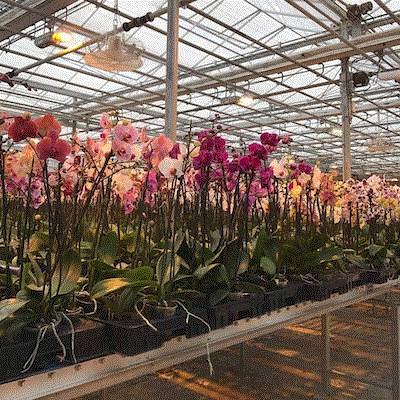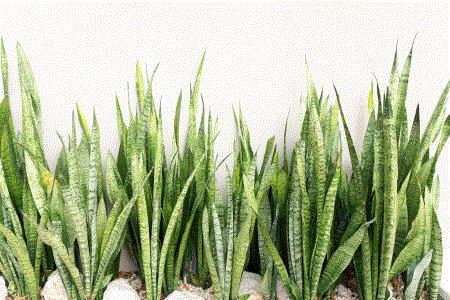Caladium Festival Returns
Did you know that the Caladium Capitol of the World is in Lake Placid, Florida? More than 1,200 acres—that’s about 90% of the world’s supply of caladiums—is grown there, just a few hours drive from Tampa and Orlando. The warm, frostless weather, fertile soils and plentitudes of rain make it the ideal spot for commercial production.
No wonder they hold a festival each year to celebrate this tropical crop. This year’s Caladium Festival, taking place July 28-29, will be the area’s 32nd. Visitors to the festival will not only see vast fields of the green, pink, white and red patterned, heart-shaped leaves, but they will also be able to shop for bulbs and more. It’s more than just caladiums, though. They’ll have a car and bike show, some floral arranging competitions, live entertainment—even a chance to hop on a one-hour trip aboard a steam-powered passenger train. The festival is free. They train ride will cost you $25.

Go to the festival and see the caladium crop in action. Learn more details HERE.

“Crops Look Great”
Since one of the lines from the press release about the caladium festival said something along the lines of “While Hurricane Ian may have hurt the caladium industry last September …” I couldn’t pass up the opportunity to learn how this year’s crop is looking.
“The Lake Placid caladium crops look great,” Terri Bates of Bates Sons & Daughters said in response to my email query, indicating she couldn’t speak for the Zolfo Springs locations. “We were able to plant back 100% but some growers couldn’t, so the industry acreage is down maybe 25%?” she guesstimated.

A view of the colorful caladium crop growing at Bates Sons & Daughters taken this week.
The weather is cooperating so far this year, giving them plentiful rainfall after having been in a significant drought for well over a year. “Our company installed all new irrigation,” Terri said, “and I am not disappointed that we don’t need it yet. Ha! It was a rough spring but hopefully we will only have a one-year hit.”
Bossman Beytes was also prompted by the caladium festival press release to investigate this year’s crops. He emailed another caladium grower, Bob Hartman, president of Classic Caladiums, to get his take on things. Replied Bob:
“Regarding the caladium crop, at this time it is looking good. We were fortunate to get our June rains, which resulted in good sprouting and initial growth. Most growers had to reduce their plantings, having in some cases not even harvested their seed back from their 2022 crop.”
Bob reminded me the way the industry works: Caladium growers save aside a percentage of their crop to cut up and replant at so many bushels per acre. Because some growers lost 80 to 90% of their crop due to Hurricane Ian, they are able to plant much less. And adds Bob, “the variety mix is upset because of last year’s [smaller] harvest.”
“Classic, because of our growing practices, suffered a 15% overall loss due to Hurricane Ian. We therefore were able to fill our 2023 orders at a high percent as well as retain sufficient seed to plant our 2023 crop, which included an increase of 10-plus percent.”
Thanks, Terri and Bob and Chris! Proof that it takes a village to bring you a story sometimes.

CosMic Plants Receives MPS-ABC
The year-round producer of phalaenopsis located in the Niagara Peninsula has the distinct honor of receiving the first MPS-ABC certificate earned by a Canadian orchid grower. CosMic Plants was founded in 2004 by Mike and Neil van Steekelenburg, Dutch brothers who emigrated from Westland to Canada. The business now has a stellar reputation for producing quality orchids in two pot sizes and in various categories and concepts.

They began their journey toward MPS-ABC environmental certification measuring crop protection agents, fertilizer, energy and water use and waste just last year. Their grower’s diligence and meticulousness with data collection, tracking and growing techniques gave them a leg up on the certification process. The company’s Integrated Pest Management is 99% chemical free. They use beneficial insects, nematodes and Bt, and control the greenhouse environment in such a way that their plants are strong, and pests and diseases don’t thrive. Chemicals are used as a last resort and only for the odd hot-spot treatment. The company also uses natural gas as a heat source for the high-efficiency boilers and the exhaust CO2 is used in the greenhouses to enhance growth. MPS-ABC certification at that point was well within their grasp.
“CosMic Plants is an example of a company where growing high-quality products is combined with efforts towards a more sustainable production,” said Arthij van der Veer, Area Manager at MPS.
For more information on MPS, visit my-mps.com.

Cultivation Station: Sansevieria!
We’re back with a new edition of “Cultivation Station,” the occasionally occurring segment for new houseplant propagators in which we provide cultivation tips for various popular crops. This week’s propagation info is sent along by Ball’s Andrew Britten, Technical Sales Manager for Foliage and Tropicals.
Today we’re giving you the prop details for Sansevieria trifasciata Laurentii. Who doesn’t love sansevieria? It’s easy to grow and ship, loves to be mistreated (at least in my house) and has some of the coolest common names in the kingdom (viper’s bowstring hemp? Very cool). And apparently you can use it to treat ear infections. What a plant!

Here’s how to grow sansevieria:
Grow time from stick to young plant: 12-14 weeks for a 4-in. with 1 plant per pot
Media pH: 5.5-7.5
Media EC: 2.0-2.5
Temperature: 65-85F
Mist: N/A
Relative Humidity: 40-60%
Light: 5000-7000 footcandles
Growth Regulators: N/A
Pests and diseases: Watch for Aphids, Fungus Gnats, Mealybugs, Thrips, Colletotrichum, Pythium, Rhizoctonia and Erwinia.
This is how I’ve come to regard sansevieria over the years: Some plants are just plants, but sansevieria is living décor. It is structurally interesting and goes with everything. And when it finally dies from prolonged neglect, it has the courtesy of doing so without you noticing.
Comments, questions, suggestions? Email me about them at ewells@ballpublishing.com.

Ellen Wells
Senior Editor
Green Profit
This edition of Tropical Topics was sent to 29,776 loyal readers!
If you're interested in advertising on Tropical Topics, contact Kim Brown ASAP!